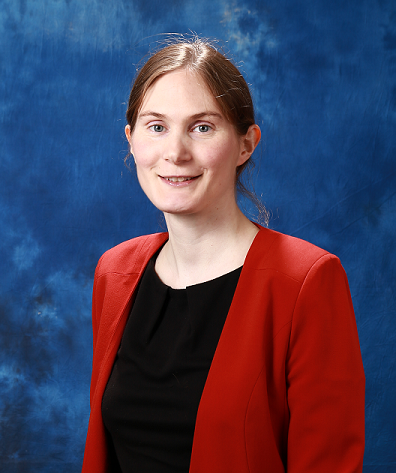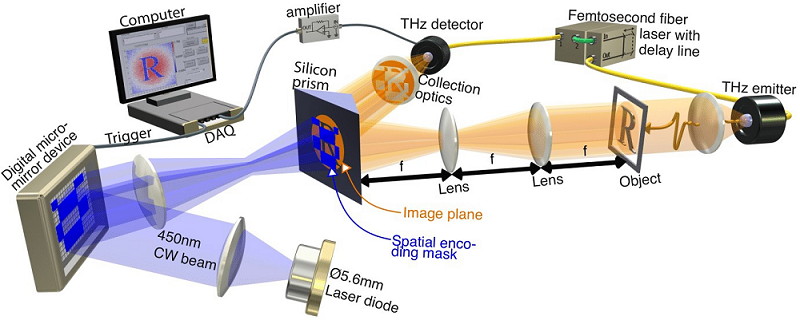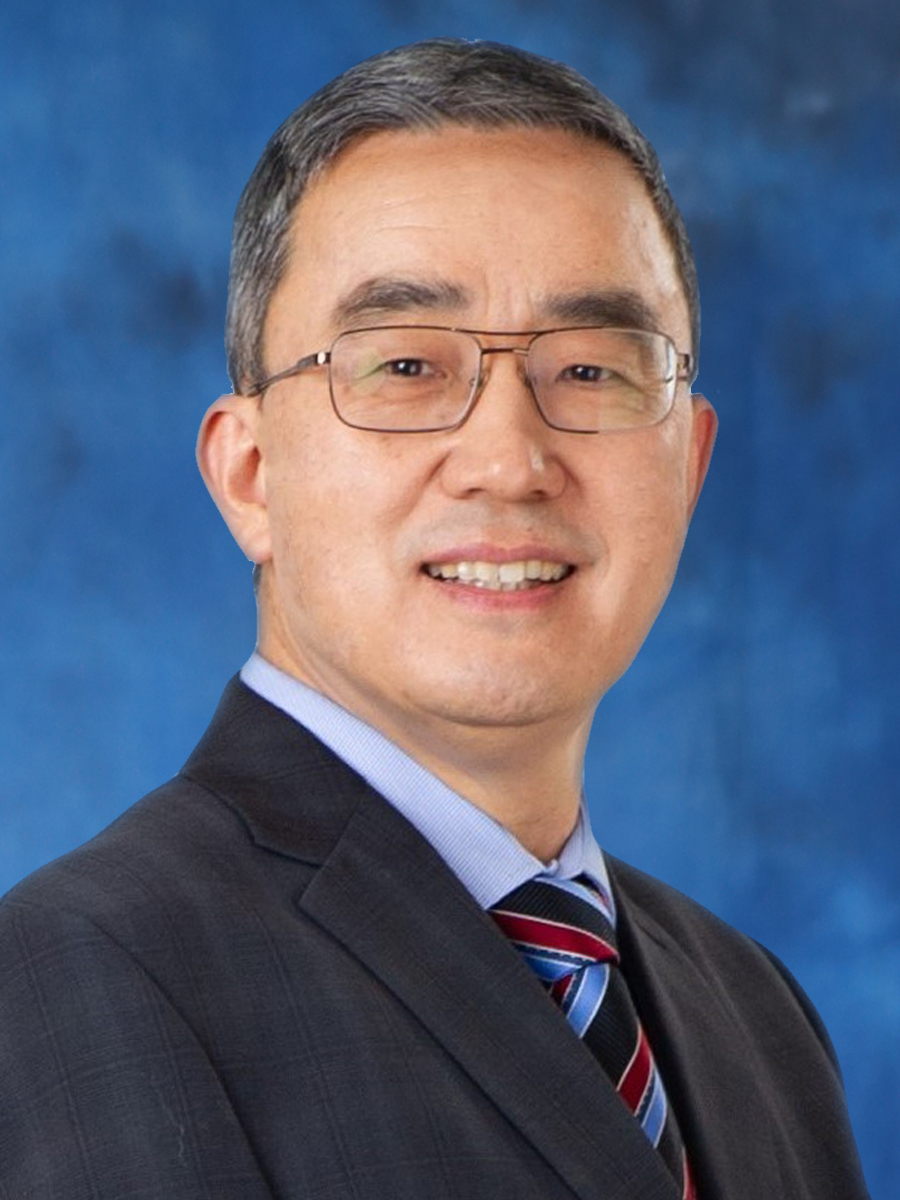Homepage
Home
CUHK announces breakthrough in improvement of the acquisition rate of single-pixel terahertz cameras by a factor of 100 published in Nature Communications
Prof. MACPHERSON, Emma from the Department of Electronic Engineering at CUHK, the Department of Physics at University of Warwick and their research teams have reached a crucial milestone towards developing single-pixel terahertz radiation (T-ray) imaging technology. Their single-pixel T-ray camera reached 100 times faster acquisition than the previous state-of-the-art without adding any significant costs to the entire system or sacrificing the sub-picosecond temporal resolution needed for the most sought-after applications, potentially opening the opportunity for them to be used in non-invasive security and medical screening. The breakthrough has been published in the journal Nature Communications.
The research team led by Prof. MACPHERSON, Emma has previously developed several THz devices including THz modulators that make use of the total internal reflection geometry to achieve high modulation depths across a broadband frequency range and a new approach for amplitude and phase modulation exploiting the Brewster angle. They are also working to improve the resolution of single pixel THz imaging through signal processing approaches. Future work will focus on improving the signal-to-noise and optimizing the software needed for accurate medical diagnosis, with the ultimate goal being to use single-pixel THz imaging for in vivo cancer diagnosis.
For more details, please visit: https://www.cpr.cuhk.edu.hk/en/press_detail.php?id=3328

Professor Emma Pickwell-Macpherson

Optical set up for single-pixel transmission imaging of object R
CUHK announces breakthrough in photonic integration published in Nature Communications
Researchers in Department of Electronic Engineering announced a breakthrough on how to use light instead of electrons to convey large rates of data in advanced optical chips. In their paper titled “High-dimensional communication on etchless lithium niobate platform with photonic bound states in the continuum” published in Nature Communications on 25 May 2020, they explained how they made use of an old concept, the so-called bound states in the continuum (BICs), first proposed by John von Neumann and Eugene Wigner in 1929 during the early historical development of quantum theory, to confine light without necessarily having the high-refractive-index channel that is needed for the conventional total-internal-reflection-based waveguiding in optical fibers and photonic integrated circuits.
Applying BICs in photonic integrated circuits enables low-loss light guidance and routing in easy-to-fabricate, low-refractive-index channels on high-refractive-index substrates. Professor Xiankai Sun explained that the BIC concept makes it unnecessary to invent new high-refractive-index polymers to form waveguide channels on the high-refractive-index substrate nor etch the substrate in order to guide light in channels in the substrate. Optical interconnections with ultrahigh data capacity are needed in high-performance computers and data centers. To further enhance the data transmission capacity, optical multiplexing technologies are used to transmit multiple channels of data in parallel. By making use of carefully engineered high-order BICs on a planar lithium niobate substrate, the researchers demonstrated the viability of the BIC concept for use in high-capacity optical communication links by using four different spatial modes for mode-division multiplexing.
Figure 1a shows an optical microscope image of the fabricated mode (de)multiplexer. Figures 1b–1e show the measured normalized spectra of light transmission from each of the four input ports to each of the four output ports. All the channels can operate in the wavelength range of 1.51–1.58 μm, and can thus be combined with conventional wavelength-division multiplexing. Figure 1f shows the experimental setup for measuring high-dimensional data transmission through the fabricated mode (de)multiplexer. Figure 1g shows the eye diagrams of data transmission through the four channels at 40 Gb/s per channel, indicating an aggregate data rate of 160 Gb/s per wavelength for the mode (de)multiplexer.
Figure 2a shows an optical microscope image of the fabricated mode (de)multiplexer integrated with on-chip electro-optic modulators. Light sent into the four input channels was first modulated by a microcavity electro-optic modulator in each channel, then passed through the mode (de)multiplexer before being directed to the corresponding output channels. Figure 2b shows the experimental setup for measuring the devices with electro-optic modulation and mode (de)multiplexing on the same chip. Figure 2c shows the measured signals in the four channels, demonstrating that the fabricated devices are capable of both electro-optic modulation and mode (de)multiplexing on a single chip.
Images

Fig. 1. Experimental demonstration of mode (de)multiplexing and high-dimensional data transmission with BICs.

Fig. 2. Experimental demonstration of on-chip electro-optic modulation and mode (de)multiplexing.
Relevant information
- Zejie Yu, Yeyu Tong, Hon Ki Tsang, and Xiankai Sun, “High-dimensional communication on etchless lithium niobate platform with photonic bound states in the continuum,” Nature Communications 11, 2602 (2020). https://doi.org/10.1038/s41467-020-15358-x
- Nature Communications (https://www.nature.com/ncomms/) is an open access journal that publishes high-quality research from all areas of the natural sciences. Papers published by the journal represent important advances of significance to specialists within each field.
- Prof. Xiankai Sun’s Photonic and Optomechanical Nanodevice Laboratory. http://www.ee.cuhk.edu.hk/~xksun/
Prof. Ming Yu, Department of Electronic Engineering has been selected for the 2020 Microwave Application Award of the IEEE Microwave Theory and Techniques Society (MTT-S) for his contribution to the development of computer aided and robotic tuning for filters and multiplexers. The award recognizes an individual or team of no more than five individuals for an outstanding application of microwave theory and techniques, which has been reduced to practice nominally 10 years before the award.
Filters and multiplexer are widely used in high frequency circuits in wireless communication systems. It is an important constituent of building reliable microwave communication network such as 5G build out and Satellites. Prof. Yu has a distinguished track record in the electronic engineering industry for decades before joining CUHK. He is well recognised for his work on developing the computer aided tuning (CAT) software for COM DEV in Canada in 1995, which was the first industry application of CAT. He received the COM DEV CEO’s Achievement Award for the development of computer-aided tuning for microwave filters in 1995 and 2006 respectively, becoming the first person to receive the highest honor in COM DEV International Ltd twice. His pioneer works are widely followed worldwide in industries, specially in wireless applications. In 2003, he demonstrated the world’s first robotic filter/diplexer tuning system at an IEEE MTT-S conference workshop in Philadelphia, PA.

Prof. Ming Yu |
Prof. Yu received the Ph.D. degree in electrical engineering from the University of Victoria, Victoria, BC, Canada, in 1995. He joined COM DEV International, Cambridge, ON, Canada, as a Member of Technical Staff since 1993 and was involved in designing passive microwave/RF hardware for both space and ground-based applications. He was a Principal Developer of a variety of COM DEV's core design and tuning software for microwave filters and multiplexers. He was a Manager of Filter/Multiplexer Technology (Space Group) and a Staff Scientist of Corporate Research and Development. Until 2016, he was the Chief Scientist and the Director of Research and Development overseeing the development of company's research and development roadmap and next generation products and technologies, including high-frequency and high-power engineering, electromagnetic-based CAD and tuning for complex and large problems, and novel miniaturization techniques for microwave networks. Prof. Yu has also led the Advanced Technology Group, Cambridge, as the Chief Scientist and an Engineering Fellow. He was later promoted to Senior Honeywell Engineering Fellow, highest honor in a 140,000-employee organization.
Since joining CUHK in 2017, Prof. Yu has secured about $20M research funds, mainly from leading industry players. He has set up a joint Faculty lab named SpaceLab. He is focusing on developing high performance RF and microwave devices and systems for terrestrial and space communication systems. His team is working on Advanced electromagnetic CAD, synthesis, modeling and low-cost manufacturing technique for filters, multiplexers, antennas and other passive devices; applied machine learning for microwave engineering. He is also helping industry to solve many immediate issues such as IC designs and high-power problems.
Prof. Yu is an IEEE Fellow and a Fellow of the Canadian Academy of Engineering. He was an IEEE Distinguished Microwave Lecturer from 2010 to 2012. He is now a member of IEEE speaker's bureau. He served as an IEEE MTT society Filter Committee Chair (MTT-8) and Chair of MTT technical committee TPC-11. He was an Associate Editor of the IEEE Transactions on Microwave Theory and Techniques. Prof. Yu is the TPC Chair of 2020 Asia Pacific Microwave Conference in to be held in Hong Kong Science Park. He published over 30 patents. He has authored or co-authored over 150 publications and numerous proprietary reports.
The award will be conferred at the annual Society Awards Meeting for August 2020 at the International Microwave Symposium to be held in Los Angel, California.
More details of Prof. Yu’s work can be found at : http://www.ee.cuhk.edu.hk/~mingyu/Research.html
The Chinese University of Hong Kong
Department of Electronic Engineering
Fast track PhD application for Fall 2020
Due to the COVID-19 (Coronavirus), the study aboard plans of some outstanding students who are holding an admission offer from top overseas universities have been affected.
To help outstanding students to commence their PhD studies as planned, CUHK EE Department now opens a fast track PhD application for Fall 2020.
Full postgraduate studentships will be provided.
The application result will be announced within two weeks.
Application deadline: 30 June 2020
Potential candidates may submit the following application materials to This email address is being protected from spambots. You need JavaScript enabled to view it.:
- CV, transcripts
- TOEFL or IELTS report
- PhD offer letter from overseas universities
- Potential supervisor and research interest
Email Subject: [Name] + CUHK EE 2020 Fall Fast Track PhD Application
香港中文大学电子工程学系
2020秋博士入学申请快速通道
为支持优秀学子们在疫情或海外签证影响下,能如期入学开始博士研究,本系现开通快速通道,欢迎申请!
提供全额奖学金,承诺两周内回复申请结果。
申请截止日期:2020年6月30日
如何申请?准备如下材料发送到 This email address is being protected from spambots. You need JavaScript enabled to view it. 即可:
- 简历、成绩单
- 托福或雅思成绩
- 海外博士录取通知书
- 意向导师和研究兴趣
邮件标题请使用如下格式:
[Name] + CUHK EE 2020 Fall Fast Track PhD Application
The Faculty of Engineering, The Chinese University of Hong Kong (CUHK) is holding a online 5-day Summer Workshop on July 6 - 10, 2020 (Monday - Friday) for applicants who are seeking admission to our PhD programmes through the Hong Kong PhD Fellowship Scheme. A total of 150 applicants will be selected to the summer workshop.
For more information, please refer to http://hkpfs.erg.cuhk.edu.hk/.
Subcategories
2025 Article Count: 5
2024 Article Count: 14
2023 Article Count: 17
2022 Article Count: 19
2015 Article Count: 12
2014 Article Count: 16
2013 Article Count: 20
2012 Article Count: 14
2011 Article Count: 10
2010 Article Count: 12
2009 Article Count: 20
2008 Article Count: 25
2007 Article Count: 2
2020 Article Count: 10
2021 Article Count: 15
2019 Article Count: 7
2018 Article Count: 8
2017 Article Count: 14
2016 Article Count: 20



